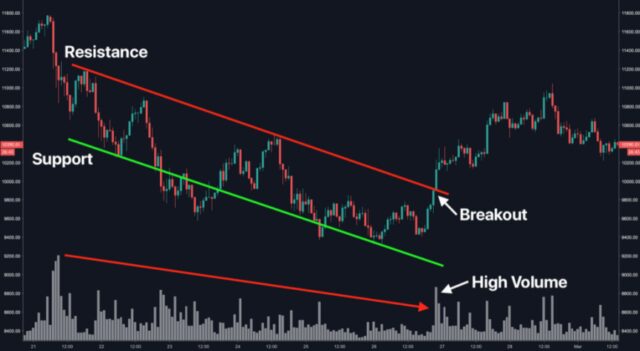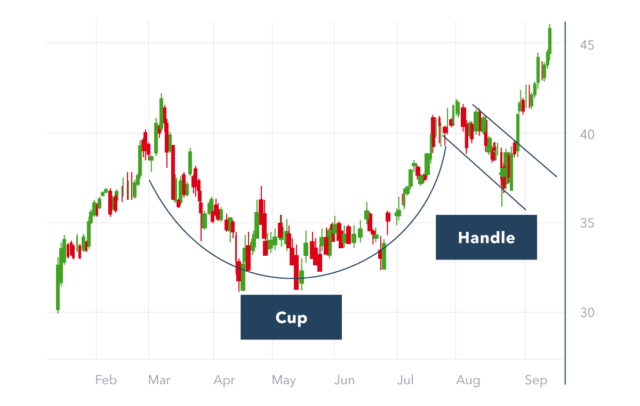
In the traditional financial world, day traders are looked at with admiration and suspicion. They are seen as risk-takers who are in it for the quick buck. But in the world of cryptocurrency, day trading is the norm. Crypto exchanges allow 24/7 trading, and there are always new coins and tokens to trade.
But what happens if you are flagged as a pattern crypto trader? Pattern traders frequently trade large amounts and often swing between profits and losses. If you are flagged, you may be subjected to closer scrutiny by the exchange. They may impose limits on your trading or even suspend your account. This article will explain what it means to be flagged as a pattern crypto trader and what you can do about it. We will also provide tips on avoiding being flagged in the first place.
What Is A Pattern Crypto Trader?

A pattern crypto trader is a type of cryptocurrency trader that looks for repeating patterns in the market to make a profit. This type of trading is based on the belief that market conditions tend to repeat themselves and that by identifying these patterns, traders can make well-informed predictions about how the market will move next.
These crypto traders often use technical analysis to find repeating patterns in the market. Technical analysis is a method of evaluating assets by studying past market data, and it can be used to identify trends and patterns. Once a pattern is identified, the trader can then predict where the market will move and take a position accordingly.
This trading is a relatively new field, and it is still subject to a lot of debate. Some people believe that pattern trading is the key to success in cryptocurrency, while others believe it is a waste of time. No matter what your opinion is, pattern trading is something worth keeping an eye on if you’re interested in the cryptocurrency market.
What Happens When You Are Flagged As A PDT?

People often ask this question. What happens if you are flagged for pattern day trading and your minimum balance is below $25,000?
You have these options.
You have two options: top up your balance or ensure your balance meets the minimum balance. You may have to wait up to 90 days before you can open new positions. It takes about three months to trade again. Depending on which broker you are working with, it is possible to request a pattern trader or PDT reset.
You will only be allowed to open new positions if your balance drops below $25,000 immediately. You will need to close any current positions to bring your account up to the minimum required balance.
In short, when you are flagged as a PDT, you will be subject to the following restrictions:
- You will only be able to trade with funds available in your account at the time of the You will be limited to trading only three times the average daily volume of the stock.
- You will only be able to place trades for the rest of the day once you have reached your limit.
- You will only be able to place trades for the rest of the day once you have reached your limit.
If you are flagged as a PDT, it is essential to make sure that you adhere to the restrictions to avoid any penalties or fines.
Why Is It Important To Avoid Being Flagged As A Pattern Crypto Trader?

When trading cryptocurrency, it’s essential to avoid being flagged as a trader. This is because they are often considered high-risk, and exchanges scrutinize their trades. If you’re flagged as a pattern trader, you may be subject to extra fees, larger minimum trade sizes, and other restrictions.
So why is it essential to avoid being flagged? There are a few reasons. First, it can significantly limit your ability to trade. Second, it can increase your costs. And third, it can lead to increased scrutiny from exchanges, which can result in your trades being rejected or delayed.
If you’re planning on trading cryptocurrency, avoid being flagged as a pattern trader. It’s essential to keep your trading activity low-key and to avoid trades that would trigger a flag.
How To Avoid Being Flagged As A Pattern Day Trader?

If you’re new to the stock market, you may wonder what a pattern day trader is and how to avoid being flagged as one. A pattern day trader makes four or more day trades within five days. This can be done in a margin account with at least $25,000 worth of equity. If you meet these criteria, you will be considered a pattern day trader subject to specific regulations.
So how can you avoid being flagged? Here are five tips:
- Keep your broker informed about your trading activity: Some brokers require customers to notify them if they plan to engage in pattern day trading. This helps the broker keep track of the customer’s activity and ensure that they meet the minimum equity requirements.
- Maintain a minimum equity balance: To avoid being flagged, you must maintain a minimum balance in your account. This amount may vary depending on your broker but is typically around $25,000.
- Limit your trading activity: If you engage too much, you may be flagged. Limiting your trading to 3-4 times the average daily volume to avoid this.
- Use stop-loss orders: A stop-loss order is an order to sell a security when it reaches a specific price. This can help limit your losses if the price of the security falls.
- Monitor your account: It is essential to monitor your account to ensure that you are not being flagged as a trader. You can do this by checking your account statements and activity reports.
Bottomline
If you are flagged as a pattern crypto trader, your account will be subjected to particular rules and restrictions. Your trading activity will be closely monitored, and you may be required to provide additional documentation to verify your identity and trading activity. Pattern crypto traders are also typically not allowed to use specific trading strategies, and their accounts may be subject to lower leverage and higher margin requirements.












